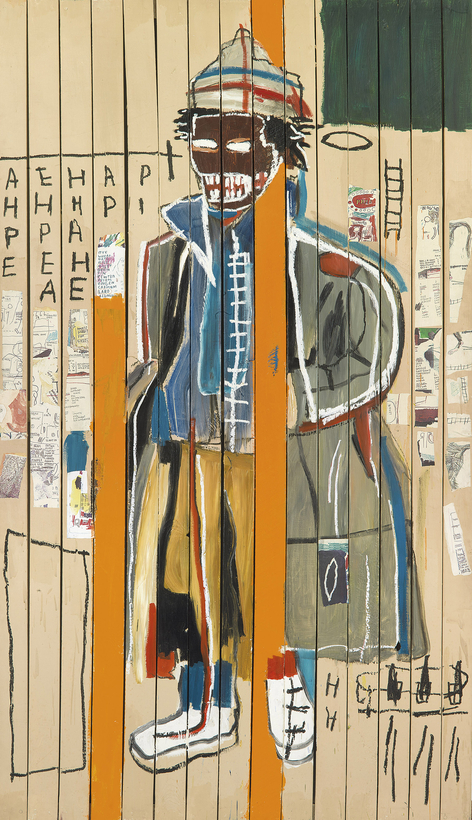What Jean-Michel Basquiat knew—what he paid attention to—frequently surprised me. In 1977, I was in public high school with Jean at the somewhat experimental City-As-School, in Brooklyn. Hanging out with him at his father’s house, I picked up an issue of Newsweek and pointed to a photo of Mikhail Baryshnikov, who was considered, I told him, the world’s greatest male dancer. “I thought it was Nureyev,” Jean said.
Indeed, the street and the conservatory—popular expression and high art—influenced Basquiat equally. At C.A.S., we didn’t have teachers; we had “advisers.” One of them described Basquiat to me in 1988, just after he died. He was “totally permeable,” she said, “open to any stimulations. Almost no skin—it all kind of went through him and then came out.”

The Boston Museum of Fine Art’s new show, “Writing the Future: Basquiat and the Hip-Hop Generation,” embeds Basquiat and his work in the scarred urban landscape that he both embodied and deepened. The exhibition chronicles how, in the early 1980s, the graffiti movement morphed into hip-hop culture, which added music and dance to the mix. The imagery that had been spray-painted on building façades by Basquiat and many others was integral to a new vocabulary of gallery-showcased art. Bare white walls in tony spaces bristled with mash-ups of text, signs, slogans, and howling caricature.
Told that Baryshnikov was the world’s greatest male dancer, Basquiat said, “I thought it was Nureyev.”
“Writing the Future” is billed as the first major exhibition to present Basquiat’s work in relation to his hip-hopping peers. We get to see how he saw his fellow artists, how he made them subjects of portraiture. Just as important, we get to see their own work alongside his. Collaborators and peers include A-One, ERO, Fab 5 Freddy, Futura, Keith Haring, Kool Koor, LA2, Lady Pink, Lee Quiñones, Rammellzee, and Toxic.
“I hate competition,” Jean said to me when he was 16. Yet the post-C.A.S. Basquiat pursued success and notoriety with a vengeance. He had so much to prove—in 1984, he described himself as the C.A.S. student “least likely to succeed.” Jean pulled away from his peers and the community as he set his sights on the highest, most exclusive kind of lionization. Three decades after his death, his canvases command stratospheric prices. It’s all the more healthy, then, to bring his art down to earth a bit, to remind us that Basquiat was part of a movement, a unique counterculture. Basquiat in context and community: needed more than ever. —Joel Lobenthal


 Discover
Discover